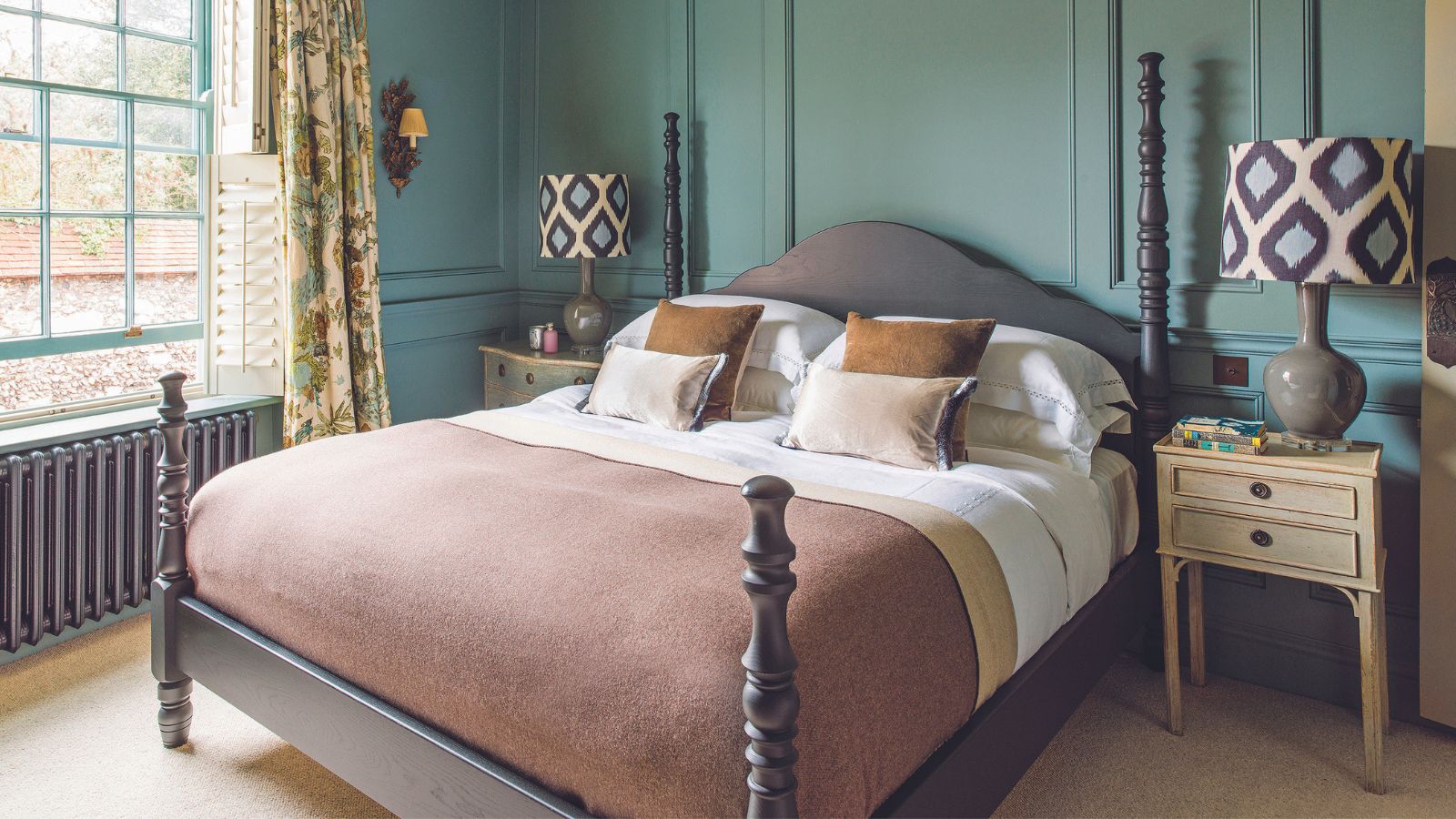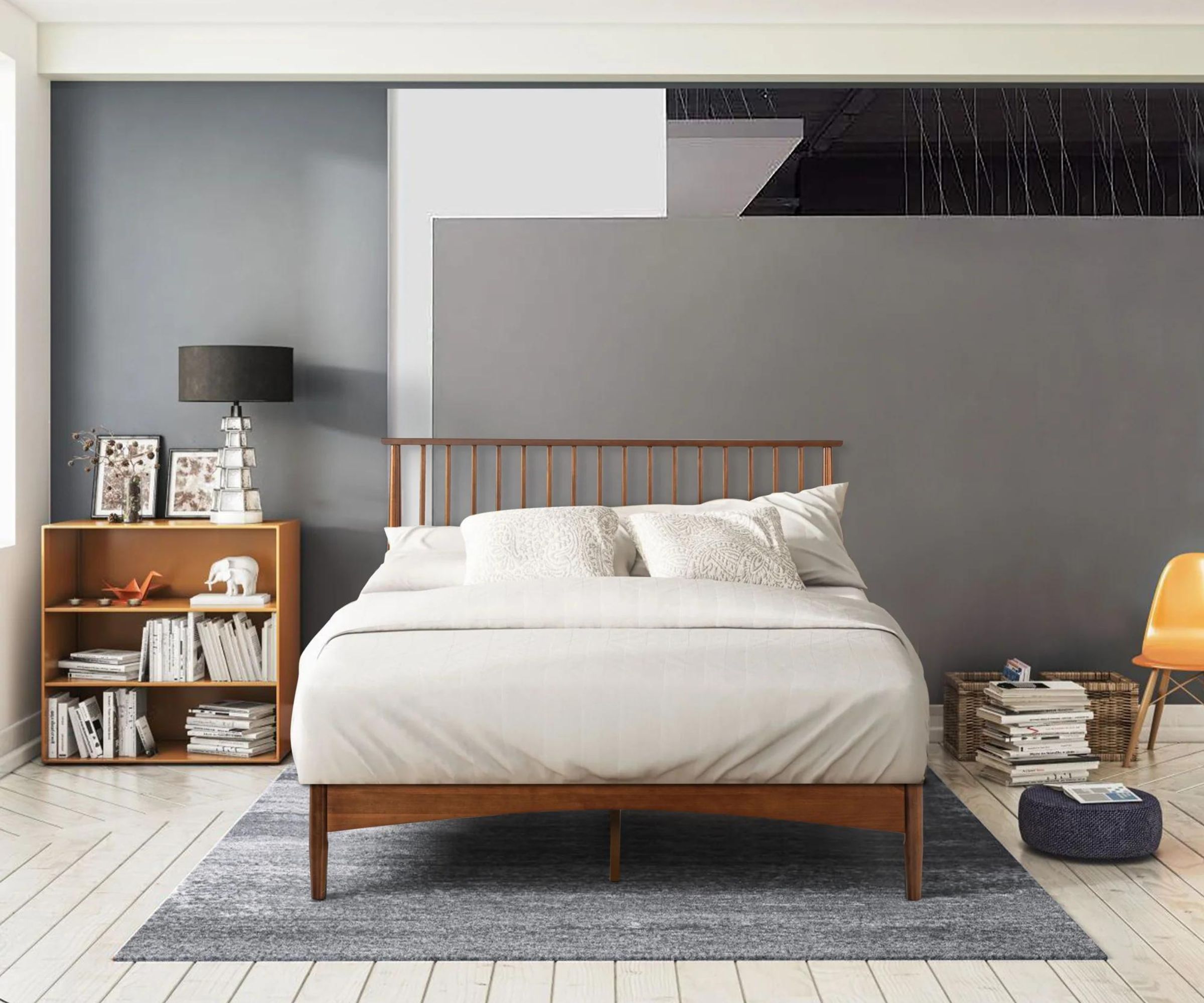How tall should your bed be? Expert advice
Consider these factors when deciding the height of your bed


Our beds are one of the most important pieces of furniture we will ever own. You spent a huge part of your life asleep and an uncomfortable bed will at best keep you up at night and at worst cause genuine health concerns. That's why even small choice like the height of a bed can lead to knock-on effects.
The height of a bed is not just a practical decision, but also a visual one, considering how the bed is dressed. A bed that is too low can make a room feel sparse and unwelcoming, while a bed that is too high can overwhelm the space and make it feel crowded.
For smaller rooms, a lower bed can create a sense of intimacy and add a touch of modern minimalism. On the other hand, a larger, grandiose room can benefit from the drama and elegance of a taller bed.
How tall should your bed be?
The height of a bed can vary based on personal preference and the type of mattress and bed frame you. However, the following suggestions can also be considered:
1. Accessibility and mobility

Think about your daily routine - getting in and out of bed is a part of that. For some, a lower bed is like taking a small step, making it easier to get up in the morning or settle in for the night. This can be especially important for individuals with limited mobility, as a lower bed provides a more accessible sleeping surface.
On the flip side, interior designer Elizabeth Grace states that a bed that is too low or too high may be difficult to get in and out of for the elderly or people with certain health problems. Low beds can put pressure on the knees and back when getting out of bed.
For children's beds such as the Decimus Twin Floor Platform Bed from Wayfair, it is best to choose a lower height for safety reasons, thus reducing the risk of injury from falls.

Elizabeth Grace is an Interior Designer, Furniture and Home Expert. She received her degree in Interior Designing from the University of Notre Dame. Elizabeth landed her first job as an intern with a leading firm in New York City, learning from some of the city’s top designers. She currently works as an interior designer for both residential and commercial clients.
2. Consider mattress thickness
When we talk about the height of a bed falling within the range of 25 to 36 inches, it's not just about the bed frame.
When measuring up your bed, you should consider the distance from the floor to the top of the mattress and the frame combined. It's about creating a comfortable sleeping environment that considers both the softness of the mattress and the overall elevation provided by the bed frame.
Tailoring bed height to your mattress thickness is crucial. A thicker mattress such as the may warrant a slightly higher bed frame to ensure a balanced and visually appealing composition or a thicker mattress on a high bed frame may result in a bed that is too high.
3. Room proportions and aesthetics

The height of the bed should complement the overall design theme of the bedroom,’ says Jacky Chou, principal and director at Archute. ‘For example, a lower bed can make a room appear larger and more open, while a higher bed can create a more defined and comfortable sleeping area.’
Considering the style and size of your room, look for a bed height that complements the design. For instance, modern styles might go well with lower platform beds, while traditional styles might work with taller bed frames. Consider how the bed height fits with the rest of your furniture and elements in the room to create a visually pleasing setup.
Coordinating bed height with nightstands, dressers, and other elements ensures a seamless visual flow, transforming the bedroom into a curated haven. Remember your bed should complement the overall flow and functionality of the room, ensuring it works well with other furnishings.

Jacky Chou is the Principal and Director at Archute, an editorial magazine about architecture, home and garden. They have been referenced by The New York Times, Bustle, House & Home, Bloomberg, and Angi. Jacky also owns an online interior design company as well called Laurel & Wolf.
4. Under-bed storage
Beds with additional storage components, including drawers or compartments, may necessitate a specific height to optimize both storage capacity and ease of use. Balancing these factors ensures that the bed serves both practical and aesthetic purposes.
According to Keely Smith, lead interior designer at JD Elite Interiors, striking the right balance ensures that the storage features are easily accessible while maintaining the overall visual appeal of the bed. A bed's height, in this context, is tailored to accommodate the storage needs of the user, ensuring a seamless marriage of practicality and style.
The chosen height optimizes storage capacity without compromising the bed's comfort or design integrity, offering a dual-purpose solution that enhances the efficiency and elegance of the bedroom space.

Keely Smith is a designer and artist living in North Vancouver, BC. She has over 10 years experience working with design studios, private companies and as a freelance designer.
5. Personal comfort preferences
Your bed's height should align with your personal comfort preferences. Some individuals prefer a lower profile for a cozier feel, while others opt for a loftier design. Find the perfect balance based on individual preferences between form and function.
Bed height isn't just a practical consideration; it's about what feels right for you. Maybe you like the idea of your feet almost touching the ground when you sit on the edge of the bed, or perhaps you prefer the elevated feeling of a higher bed.
It's about aligning your choice with your personal comfort and style. So, when deciding on a bed height, take a moment to think about what makes you feel most at ease and at home in your bedroom. After all, comfort and personalization are the key elements of a well-designed interior.
FAQs
Do high beds make a room look smaller?
Having a high bed will not necessarily make your bedroom look smaller. If you can see the space beneath the bed, it will automatically make your room look more spacious. Rooms with high ceilings will suit higher beds as they will look more in proportion. With lower ceilings, a lower bed will feel more appropriate.
Choosing a bed height is a bit like finding the perfect pair of shoes - you have to try a few to know what feels just right. Lie down, sit on the edge, swing your legs over - test it out. Your bed is your sanctuary, and its height contributes significantly to your overall comfort. So, don't rush the decision. Take the time to explore different options until you find that sweet spot.
Sign up to the Homes & Gardens newsletter
Design expertise in your inbox – from inspiring decorating ideas and beautiful celebrity homes to practical gardening advice and shopping round-ups.

Seraphina is a contributing editor at Homes & Gardens, writing Solved features on organizing and storage. She loves to decorate and also grow her own produce from her home in London. Her previous experience includes working at Women's Health and Fabulous Magazine.
-
 These are the 6 must-have colors to decorate with in April 2025
These are the 6 must-have colors to decorate with in April 2025What do retro-inspired yellows and beautiful blues all have in common? They're on our hot list for the season ahead
By Sophia Pouget de St Victor Published
-
 Plants never to grow next to fruit trees
Plants never to grow next to fruit treesExpert advice on which plants to keep away from fruit trees to encourage a healthy harvest
By Jacky Parker Published